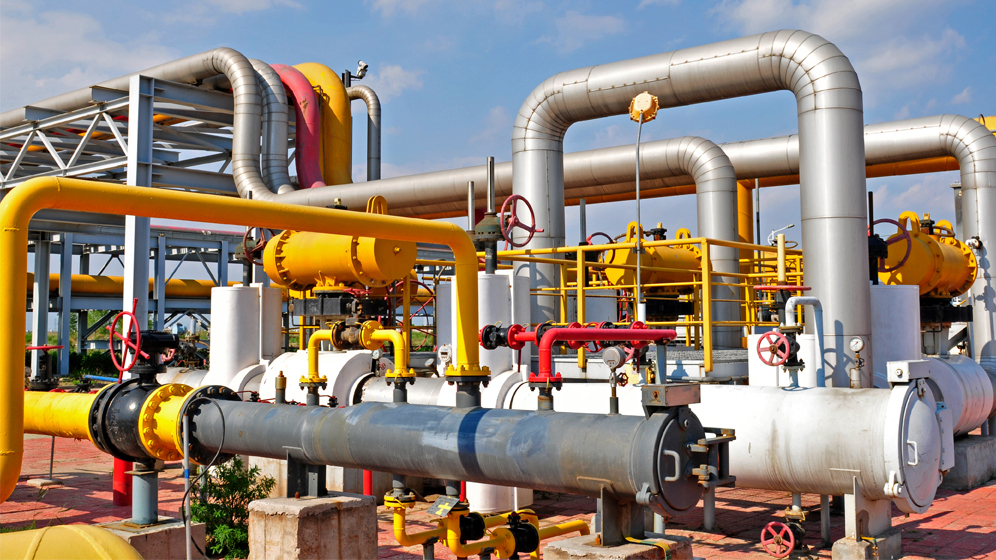At the end of June, we removed our exclusionary screen on nuclear power. Unlike other exclusions we’ve removed, this decision is was driven by a shift in our thinking about the underlying issue itself.
NEI removed its exclusionary screen on nuclear power at the end of June, an exclusion that has been part of our responsible investment program since the inception of our predecessor company almost 40 years ago. Unlike other exclusions we have removed because they are better handled by our evaluations process, this decision is unique, in that it was driven by a shift in our thinking about the underlying issue itself. We now see nuclear energy playing a critical role in the drive to a net-zero future and as such, we see a role in our portfolio for companies in that industry.1
The urgency and the opportunity tied to a successful energy transition grows every day. There will be many different aspects to the transition, but there is general consensus that the one-two punch of transforming our electricity system to a zero-emission grid, while electrifying as much of our energy needs as possible, is foundational. This implies a massive increase in electricity demand and an even greater emphasis on reliability of the grid to accommodate the increase.
According to the International Energy Agency (IEA), nuclear power is the second largest source of low-carbon electricity in the world today behind hydro, and bigger than wind and solar combined.2 In the 50 years between 1971 and 2018, the IEA estimates that the global fleet of nuclear reactors has avoided 55 gigatons of greenhouse gas (GHG) emissions—the equivalent of two years of energy-related emissions for the entire planet. The European Commission, through its Joint Research Committee, did a deep dive on the low-carbon nature of nuclear power and confirmed it had emissions as low or lower than current renewable technologies, a finding that correlates with that of the International Panel on Climate Change, the Organization for Economic Cooperation and Development, and the UN Economic Commission for Europe.3 Nuclear power currently represents roughly 15% of Canada’s electricity generation and about 20% of the U.S. grid.4
These are big numbers on their own, but it is the functionality of nuclear power that makes it so important to the transition. The relative role of nuclear in meeting the rise in energy demand will diminish going forward, as the growth of cheaper renewables (and accompanying storage technologies) is expected to outpace all forms of energy in the future.5 But nuclear power’s ability to provide steady baseload generation is absolutely critical in paving the way for a rapid rise in intermittent renewable energy sources. Put simply, a nuclear reactor can run 24 hours a day, 7 days a week, unlike wind and solar. This contributes to grid stability and will be a highly valued quality in the future grid.
High profile events have crystalized concerns about grid reliability and brought it to the forefront of public consciousness. The rolling blackouts in Texas during the ice storm of 2021 and the more recent threat of rolling blackouts in Alberta were vivid reminders of how much we rely on a steady grid. Grid operators will increasingly place a premium on reliability, particularly as they learn to navigate with significantly more sources of intermittent renewable energy.
The only other sources of energy that can match this functionality today are large-scale hydro sources and fossil-fuel fired generation, i.e., coal and natural gas. Large-scale hydropower will continue to be the backbone of the low-carbon grid for many regions, but scalability is limited by a number of factors, such as the availability of water and the impacts of creating reservoirs. The utility of fossil-fuel fired sources of energy will mean there is likely an extended role for them in the future grid, but to meet the growing demand for electricity while also meeting our GHG reduction targets, the role of coal and gas will need to shrink substantially. Therein lies the opportunity for nuclear.
It is instructive to consider what would happen if the world were to shut down existing nuclear power generation. This is not a notional thought exercise, as we have seen exactly this in Japan, following the Fukushima disaster, and in Germany, where public sentiment on nuclear similarly turned. The results were informative.
In Germany, the energy provided by the nuclear reactors that were shut down6 was largely replaced by renewable sources. This is a good news story for the potential to ramp up development of renewables over a relatively short period of time. However, those renewables did not replace the coal-fired generation that is a foundational element of the German grid; those sources have kept running. Based on the projected increase in demand for electricity7, and the need for reliable baseload energy, Germany’s coal-fired plants will likely be running for quite some time. The result is a grid that is almost 10 times as GHG-intensive as that of neighbouring France, where nuclear power represents 63% of electricity generation8.
Japan too had success in rapidly deploying renewable energy sources to compensate for the shuttering of nuclear plants post-Fukushima, but the need for reliable baseload power meant that fossil-fuel generation spiked in the immediate aftermath of the disaster before coming back down to remained basically static from the period shortly before the incident.
Researchers who performed a “what if” scenario, where instead of shuttering their nuclear facilities Germany and Japan instead replaced existing fossil-fuel generation, found that the two countries would have reduced emissions by 2,400 megatonnes of CO2 and prevented some 28,000 pollution-induced deaths between 2011 and 2017.9 That emissions volume is equivalent to 15 times the annual transportation sector emissions of Canada.10 We see it as significant missed opportunity that underlines the rationale for including nuclear in the energy transition.
For many people the starkest reminder of the risks associated with nuclear energy remains the Chernobyl disaster. To be clear, safety concerns were valid then and are still just as valid today; however, a closer look at the safety record and health impacts of nuclear power provides some surprising results.
Considering the direct impacts of accidents and the indirect impacts of air pollution, nuclear has the lowest fatality rate of almost any generation technology. To put it in numbers, Our World in Data states that nuclear energy has a fatality rate of 0.03 deaths per terawatt-hour, lower than everything but solar, at 0.02 deaths per terawatt-hour.11 Importantly, the fatality rate is dramatically lower than the two biggest sources of electricity in the global grid. Natural gas and coal have a 2.8 and an astounding 24.6 deaths per terawatt-hour respectively. Put another way, nuclear energy results in 99.8% fewer deaths than coal, and 97.6% fewer deaths than gas. As noted in the study referenced earlier, statistically, the decision to shut down nuclear facilities in Japan and Germany instead of fossil-fuel generation plants would have led not only to higher GHGs, but to much higher loss of life.
Waste is another factor to consider when looking at nuclear. The most toxic remnants of the nuclear process retain their radioactivity for thousands of years, well beyond the regular planning timeline. Only about 3% of the waste that is associated with the industry lands in this category,12 but the toxicity and longevity of the risk make it a serious concern, and the industry has famously struggled to find a long-term storage solution. But safe storage is technically feasible, including disposal deep underground, and new innovations that would dramatically reduce the volumes of highly radioactive waste hold promise.
New reactors that would use spent fuel or recycle their waste back into the energy generation process have shown success in the lab but have yet to reach the maturity needed to become a reliable solution. Nevertheless, conceptually, this is a path that would all but eliminate the scale of the current waste problem. Other innovations include the creation of fuel that resists meltdowns and the push for small modular reactors.
We are not alone in finding that nuclear has an important role to play in the energy transition. The European Commission included nuclear energy in its Sustainable Finance Taxonomy as a transitional activity, meaning it cannot yet be replaced by technologically and economically feasible low-carbon alternatives, and will play a major role in the transition to a climate-neutral economy. The Inflation Reduction Act in the U.S. contained several provisions designed to incentivize both the ongoing operation of existing generators and the development of new technologies, as part of that bill’s effort to stimulate the growth of climate solutions. And here in Canada a 15% refundable Investment Tax Credit for Clean Electricity was introduced that can be applied to new nuclear facilities and the refurbishment of existing generation.
There will be more advances from this industry and some of these will bring investment opportunities, but our decision to lift our ban was firmly rooted in the here and now. A look at the utility companies that are investing heavily in renewables shows several have existing nuclear generation capabilities that act as the backbone of their fleet while they pursue renewable energy opportunities. Screening out nuclear power was creating a roadblock to supporting and benefiting from this growth.
The removal of our longstanding exclusion was not a decision made in haste, but rather a logical choice for an institutional investor that is committed to speeding the energy transition and mitigating the systemic risks of climate change.
NEI’s exclusion on nuclear weapons, part of its controversial weapons exclusion, remains in place.
2 International Energy Agency, World Energy Outlook 2023.
3 https://finance.ec.europa.eu/system/files/2021-03/210329-jrc-report-nuclear-energy-assessment_en.pdf.
4 https://www.cer-rec.gc.ca/en/data-analysis/energy-markets/market-snapshots/2017/market-snapshot-canadas-nuclear-energy-output-ranked-6th-in-world.html.
5 IEA, World Energy Outlook 2023.
6 The last operational nuclear reactor in Germany was shut down this year. https://www.base.bund.de/EN/ns/nuclear-phase-out/nuclear-phase-out_node.html.
7 https://www.technologyreview.com/2023/04/27/1072287/inside-germanys-power-struggle-over-nuclear-energy/.
8 https://www.technologyreview.com/2023/04/27/1072287/inside-germanys-power-struggle-over-nuclear-energy/.
9 https://www.sciencedirect.com/science/article/pii/S0301421519303611.
10 Calculation based on federal government data found here: https://www.canada.ca/en/environment-climate-change/services/environmental-indicators/greenhouse-gas-emissions.html#transport.
11 Hannah Ritchie (2020) - “What are the safest and cleanest sources of energy?” Published online at OurWorldInData.org. Retrieved from: https://ourworldindata.org/safest-sources-of-energy
12 https://world-nuclear.org/information-library/nuclear-fuel-cycle/nuclear-waste/radioactive-wastes-myths-and-realities.




